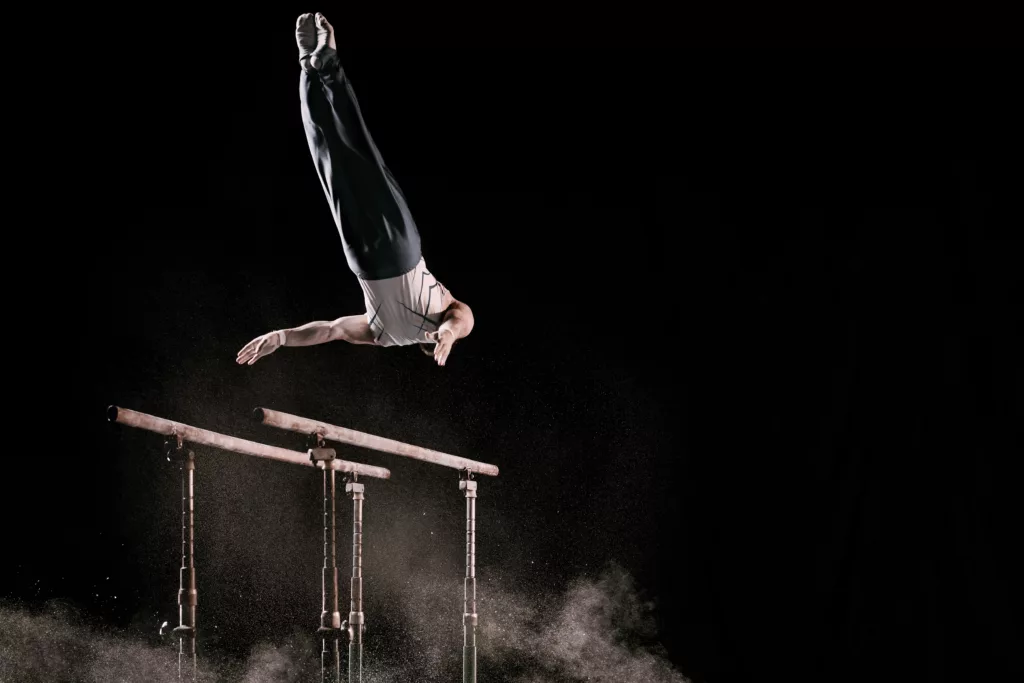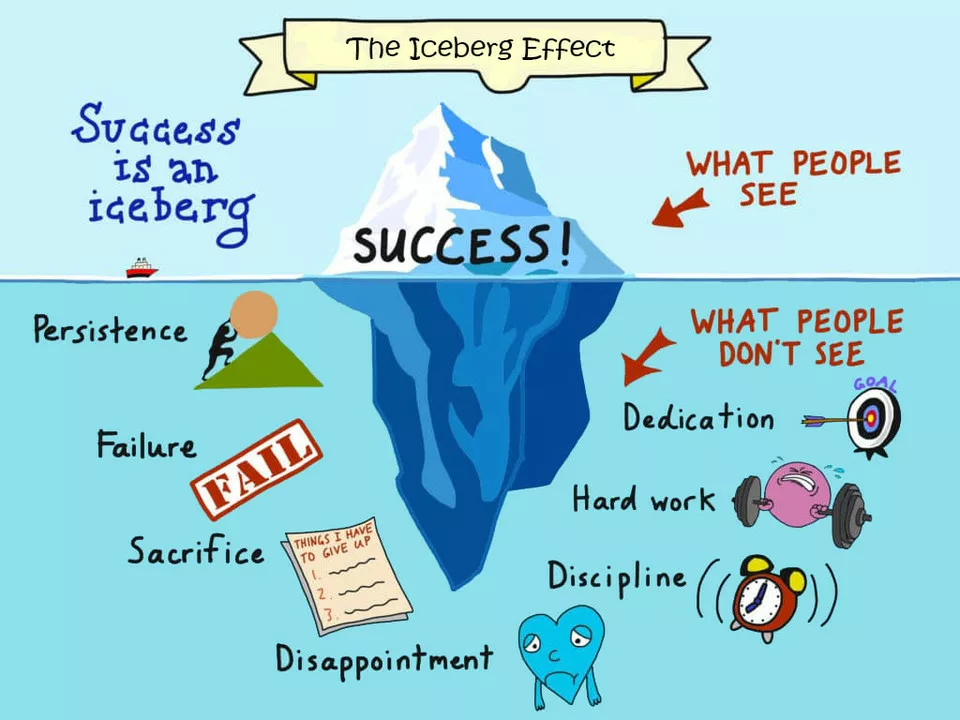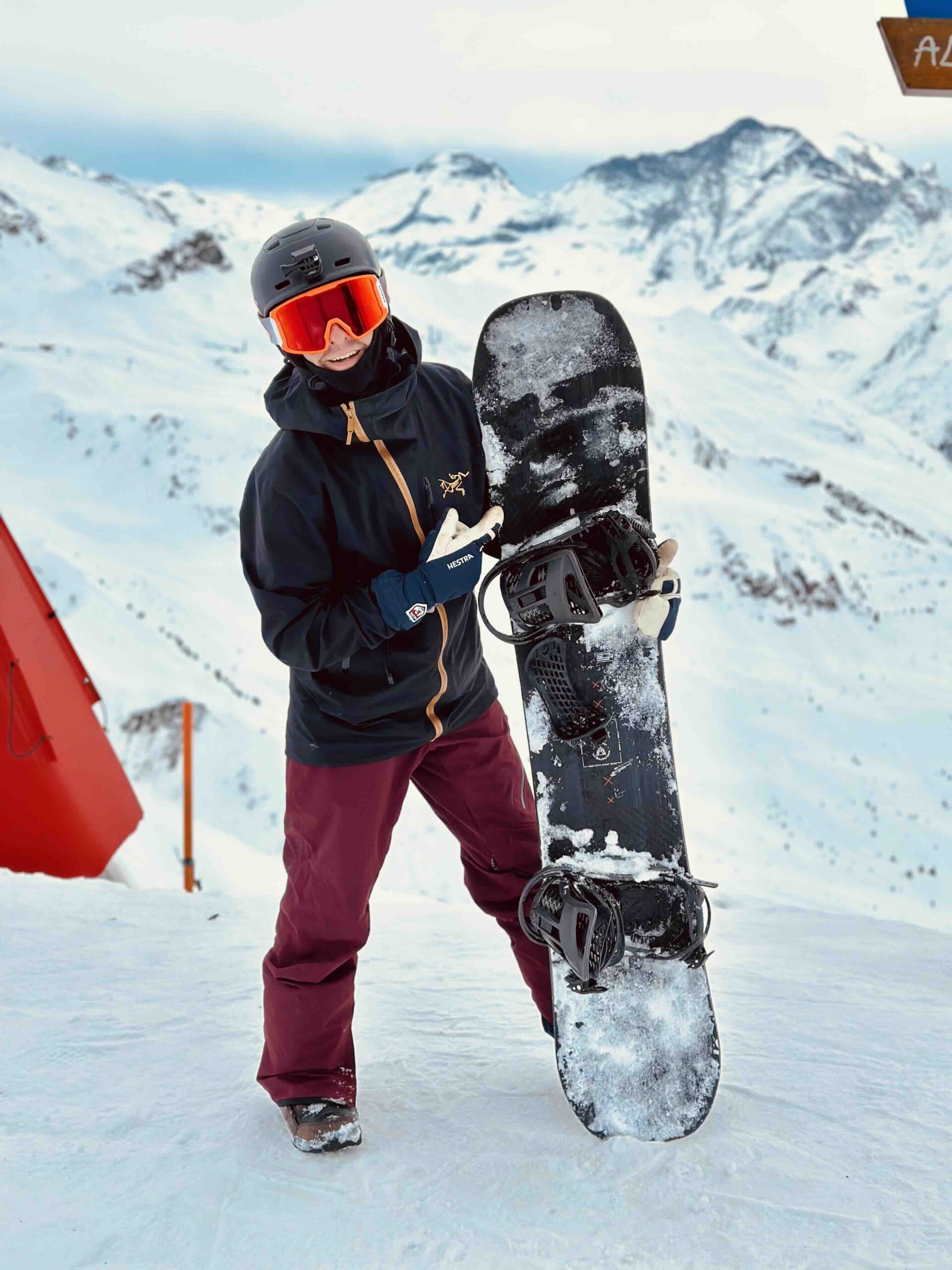Fitness should be viewed as a lifetime pursuit of health and well-being. In this article, we’re going to outline why elite athletic training methods might not be suitable when training the aging athlete.
We’ll explain why this style of training could be detrimental for those over the age of thirty, and we’ll show you an alternative way to guide your clients to long-term, sustainable results.
Table of Contents
It might be tough to accept, but your clients aren’t elite athletes. Most have never been an elite athlete, and even if they once were, their current physical state no longer aligns with that level of performance.
As personal trainers, it’s important to realize that our clientele are everyday athletes. And, even elite athletes transition to the status of everyday athletes as they age.
If you disagree with this perspective, it’s possible that you’ve been swayed by popular elite training plans peddled on the internet, ones that claim to reveal the secret to transforming ordinary folks into Olympic-level competitors.
Consequently, it’s likely that many of your clients have suffered injuries in the last two years due to these intense training regimens and have seen their progress plateau or, worse, recede.
Elite training plans sell, that’s the reality. But, your clients, for the most part, aren’t elite.
The overemphasis on elite training results from a misconception that an individual can achieve elite athletic status because marketing gurus want us to believe it’s possible. Many fitness enthusiasts, especially as they approach mid-life, still believe they can reach these heights.
It’s natural for people to be intrigued by what the elite do, but trying to mimic the training regimen of a Navy Seal, an elite CrossFitter, an elite marathoner, or an elite triathlete could lead your clients down a path of injury and unfulfilled expectations.
As fitness professionals, it’s our responsibility to guide our clients away from these lofty and unrealistic goals and towards sustainable, health-focused ones.
These athletes have spent decades preparing their bodies for such high-level performance. Training, in the same manner, will set your clients up for a fall, one their bodies are ill-equipped to handle.
This doesn’t mean your clients shouldn’t participate in these sports or events. Instead, let’s encourage them to take a sensible approach to training.
Let’s develop training programs that promote recovery and longevity, building foundations that allow them to enjoy these events for a lifetime.
The Iceberg Paradigm
Icebergs are dual-natured: we observe their majestic presence above the surface, yet their true substance lies hidden beneath the waves.
Focusing solely on the outcomes is a common pitfall for those over thirty engaged in their health and fitness journey. It creates a misleading representation of the path to success.
We witness the triumphs, the milestones, the transformations, but not the undercurrent of effort that brought them to fruition – the hours spent out of sight, the hiccups along the way, the solitude experienced on the journey towards these victories.
These feats do not advertise the weeks, months, and even years of consistent, rigorous work that preceded them.
There are no shortcuts in fitness. There are no instant successes. The glamourous montage of those impressive training sessions and workouts are the fruits of years, if not decades, of dedication.
These athletes have earned their right to be in this position. It could even be argued that they are genetically predisposed to perform these types of workouts.
An iceberg doesn’t accelerate rapidly. It doesn’t rush its journey. It moves with a constancy that is often so slow it’s hardly noticeable.
Similarly, you can’t expedite the process of health and fitness. The human body isn’t designed to leapfrog stages. It still takes 9-months to carry a child to term.
The most pivotal wisdom we impart to our coaching clients is the appreciation of the long, gradual journey to personal greatness.
Patience isn’t merely a virtue. It’s a skill, a determinant that distinguishes those who succeed from those who falter.
The underlying principle here is that the unseen lays the groundwork for the seen.
Spectators don’t see the roots of the iceberg. They don’t realize the depth or how they stretch and bend in the unseen abyss, navigating around obstacles.
They don’t grasp that this submerged structure is what endows the iceberg with its resilience. Spectators only perceive the visible – the magnitude of the iceberg.
Those of us immersed in the domain of fitness understand better.
The Hidden Realities of Elite Training Plans
The reality is that elite training plans can often appear quite tedious, as elite athletes dedicate the majority of their time and effort to their chosen sport or discipline.
Those who coach such athletes know that the primary rule is to prevent injuries, so their training methods are distilled to the core essentials.
Take running as an instance, with elite ultra-runner Kilian Jornet as an example. His highlight reel might look something like this:
Incredibly inspiring, isn’t it? The heart-pumping sprints, the challenging mountain ascents – who wouldn’t want to emulate that?
The issue arises when many people try to replicate it, leading to burnout and injuries. This is the iceberg metaphor in practice.
What often goes unnoticed is the meticulous nature of Kilian’s yearly training regimen. He completes nearly 1250 hours of training per year. That’s right, 1250 hours. This equates to over 40 hours a week, averaging 3 hours daily, primarily in heart rate Zones 1 and 2.
For those unfamiliar with heart rate training zones, this may seem fairly relaxed. Of those 1250 hours, only a small 10% includes high-intensity work, scattered throughout the year.
Kilian Jornet’s Zones 1 and 2 are drastically different from the same zones for amateur athletes. Kilian can sprint at these heart rates, whereas most amateurs would need to walk. This disparity is enormous. His years of dedicated training have allowed him to maintain such pace with relative ease.
Unfortunately, many amateur runners carry out 90–100% of their running as high-intensity work. This leads to high injury rates and numerous cases of burnout. Can you see the stark contrast compared to Kilian’s approach?
Kilian Jornet isn’t the only one who follows this low-intensity training methodology. If you look at the achievements of one of the world’s best Ironman athletes, Mark Allen, you’ll find a similar story – long duration, slow miles.
His exhilarating race towards the finish line is just a glimpse of his training journey. It’s merely the visible tip of the iceberg that hides countless hours dedicated to low-intensity training AND restorative work.
As a fitness professional, it’s crucial to adapt these insights into the training plans of your clients, particularly those over thirty. Their sport is the sport of life, and their training should be tailored accordingly.
The top priority for your clients should be to ensure they get at least seven hours of sleep each night, a goal that is often more challenging than completing intense workouts. Such intense workouts can lead to burnout and disturb sleep patterns.
Guiding them toward a more balanced, long-term fitness strategy, akin to elite training plans, will result in better health and performance in their daily lives.
The Mistake of Training Clients Like an Elite Athlete
The majority of adults in the developed world lead predominantly sedentary lifestyles. Even those who frequent the gym or engage in regular exercise are often sitting for more than ten hours a day.
Most of our clients over thirty juggle full-time jobs, family obligations, children, and the everyday stresses of life. They average less than six hours of sleep per night, drink fewer than three glasses of water a day, and clock less than three thousand steps daily.
Such a lifestyle is incompatible with the training methods employed by elite athletes. These top-tier performers have mastered the balance of exercise, sleep, and hydration. Additionally, they are often unencumbered by the lifestyle burdens common to those over thirty.

So, it’s not surprising that when our clients try to emulate the training methods of elite athletes, they often end up injured. They simply lack the physical robustness required to withstand this intense style of training.
Keep in mind, most elite athletes have never had a desk job. Their lives have been spent honing their bodies, actively moving in three dimensions for countless hours each day.
Elite athletes focus solely on excelling in their chosen sport. Their peak performance is the result of years of dedication, hard work, fortuitous circumstances, favorable genetics, and cultural factors. They have mastered the art of compensating for any physical shortcomings.
Their training is intricately tailored to their sport, and paradoxically, working on their weaknesses could potentially harm their performance.
For our clients over thirty, their “sport” is the game of life. Their training needs to be tailored to improve their performance in this game.
As fitness professionals, our number one priority should be to ensure that our clients are getting at least seven hours of sleep per night. This may seem less glamorous than high-intensity workouts, but remember that such strenuous training can actually hamper sleep quality.
Our approach should always be aimed at enhancing our clients’ overall health and fitness, aligning with their lifestyle, and taking into consideration their age and physical capacities.
After all, we’re not training elite athletes; we’re training everyday champions.
Training the Aging Athlete: A Different Approach
One of the most frequent missteps I notice in the fitness world is the common belief that life is a race to be sprinted through, with personal bests to be conquered weekly. This is particularly prevalent among non-elite athletes over the age of thirty.
However, life is not a sprint; it is more akin to an ultra-marathon. Esteemed fitness educator, Steve Maxwell, succinctly highlights this concept.
He persistently urges individuals to reassess their current fitness goals, encouraging them to think about how these goals will contribute to their well-being when they are 80 years old.
When faced with this question, many realize that their current training will not.
At Strength Matters, we believe that the same question should be applied to every exercise in a workout, every daily activity, and every meal we consume – will this improve my life when I’m 80 years old?
More often than not, training like an elite athlete won’t provide the benefits one might expect.
Our clients, everyday athletes aged over thirty, just need to be able to move well, free from discomfort or injury. They need to be strong enough to lift necessary objects, including their own body weight. Their cardiovascular health should be good enough to allow them to comfortably climb a long flight of stairs, thereby enhancing their longevity and prosperity.
Do your clients have strength goals but struggle with mobility? Are they training for a cardio-intensive event like a half marathon but lack a fundamental level of strength? Do they gasp for breath after a simple uphill climb? Do they regularly experience niggles or injuries during training?
If the answer to any of these questions is ‘yes’, it’s time for you to rethink their current training regime. Ask yourself if this training will genuinely improve their lives when they’re eighty.
As fitness professionals, we need to prioritize our clients’ health, advocating a balanced approach to fitness. This helps to prevent injuries, allows for peak daily performance, and promotes longevity.
The reality is that most people need to increase their daily steps, hydrate better, and get more sleep. Hence, our fundamental principle at Strength Matters is “Walking, Water, Sleep” (WWS).
Once these basic elements are in place, we can then focus on improving mobility (which includes flexibility), incorporate some basic resistance training, and include aerobic exercise. This comprehensive approach equips our clients to handle whatever life throws at them.
Though it’s tempting to emulate elite training regimes, it’s crucial to remember that those athletes have devoted years, even decades, to their training. For our clients, their fitness journey is just beginning.
At Strength Matters, we train everyday athletes to be better at life’s everyday tasks. Our goal is to enhance their lives when they’re 80 years old, promoting a balanced and enjoyable approach to fitness that yields long-term results.
We aim to help our clients live long and prosper, meaning we need to guide them to train intelligently and purposefully.
In our role as fitness professionals, we focus on the unseen elements, much like the hidden depths of an iceberg.
After all, it’s what lies beneath the surface that truly counts.

Final Thoughts
Elite athletes are an exceptional group, having spent decades honing their bodies to manage the demands of their sport. Their success is the result of countless hours of unseen work.
As fitness professionals, it’s our job to understand that our clients, mostly everyday individuals over thirty, aren’t equipped to handle elite-level training regimes.
Injuries can have severe consequences on everyday athletes, affecting their work and family lives. That’s why it’s crucial for us to steer them away from the allure of elite training plans.
Instead, we should focus on the basics: encouraging more walking, better hydration, and ample sleep. We should prioritize mobility and incorporate a balanced mix of resistance training and cardiovascular work into their routines.
This kind of regimen might seem mundane compared to the flashiness of elite training plans, but the benefits are tangible and sustainable.
As fitness professionals, it’s our responsibility to guide our clients towards longevity and a healthier, balanced approach to fitness. After all, life’s a marathon, not a sprint.
FAQ
Why Shouldn’t We Train Aging Athletes Using Elite Methods?
Elite methods are designed for top-performing athletes who often don’t face typical everyday stresses and can recover quicker. Aging athletes require a more balanced, sustainable approach to support their fitness and well-being.
How Should We Train the Aging Athlete?
Training the aging athlete should prioritize health first and follow a balanced approach to fitness, including sufficient sleep, hydration, and mobility work, to avoid injury and ensure long-term well-being.
What is the Impact of Elite Training Methods on Aging Athletes?
Elite training methods can lead to injuries, burnout, and unsustainable results for aging athletes due to their intensive nature and lack of compatibility with the physical needs and lifestyle constraints of older individuals.
What are the Key Elements to Consider When Training an Aging Athlete?
Important elements include achieving a balance of strength, flexibility, cardiovascular fitness, focusing on restorative sleep, hydration, and nutrition. Also, consider stress levels and the overall lifestyle of the individual.
Can Aging Athletes Still Reach Fitness Goals Without Elite Methods?
Yes, aging athletes can absolutely reach fitness goals without elite methods. In fact, by adopting a balanced and sustainable approach to fitness, they can achieve better long-term results, improved health, and enhanced quality of life.

